Polar Capital Technology Trust plc (the "Company"): The Company is an investment company with investment trust status and its shares are excluded from the Financial Conduct Authority’s (“FCA”) restrictions on the promotion of non-mainstream investment products. The Company conducts its affairs, and intends to continue to conduct its affairs, so that the exemption will apply.
The Company is an Alternative Investment Fund under the EU's Alternative Investment Fund Managers Directive 2011/61/EU as it forms part of UK law by virtue of the European Union (Withdrawal) Act 2018.
The Investment Manager: Polar Capital LLP is the investment manager of the Company (the "Investment Manager"). The Investment Manager is authorised and regulated by the FCA and is a registered investment adviser with the United States' Securities and Exchange Commission.
Key Risks
- Investors' capital is at risk and there is no guarantee the Company will achieve its objective.
- Past performance is not a reliable guide to future performance.
- The value of investments may go down as well as up.
- Investors might get back less than they originally invested.
- The value of an investment’s assets may be affected by a variety of uncertainties such as (but not limited to): (i) international political developments; (ii) market sentiment; and (iii) economic conditions.
- The shares of the Company may trade at a discount or a premium to Net Asset Value.
- The Company may use derivatives which carry the risk of reduced liquidity, substantial loss and increased volatility in adverse market conditions.
- The Company invests in assets denominated in currencies other than the Company's base currency and changes in exchange rates may have a negative impact on the value of the Company's investments.
- The Company invests in a concentrated number of companies based in one sector. This focused strategy can lead to significant losses. The Company may be less diversified than other investment companies.
- The Company may invest in emerging markets where there is a greater risk of volatility than developed economies, for example due to political and economic uncertainties and restrictions on foreign investment. Emerging markets are typically less liquid than developed economies which may result in large price movements to the Company.
Important Information
Not an offer to buy or sell: This document is not an offer to buy or sell or a solicitation of an offer to buy or sell any security, and under no circumstances is it to be construed as a prospectus or an advertisement. This document does not constitute, and may not be used for the purposes of, an offer of the securities of, or any interests in, the Company by any person in any jurisdiction in which such offer or invitation is not authorised.
Information subject to change: Any opinions expressed in this document may change.
Not Investment Advice: This document does not contain information material to the investment objectives or financial needs of the recipient. This document is not advice on legal, taxation or investment matters. Prospective investors must rely on their own examination of the consequences of an investment in the Company. Investors are advised to consult their own professional advisors concerning the investment.
No reliance: No reliance should be placed upon the contents of this document by any person for any purposes whatsoever. None of the Company, the Investment Manager or any of their respective affiliates accepts any responsibility for providing any investor with access to additional information, for revising or for correcting any inaccuracy in this document.
Performance and Holdings: All data is as at the document date unless indicated otherwise. Company holdings and performance are likely to have changed since the report date. Company information is provided by the Investment Manager.
Benchmark: The Company is actively managed and uses the Dow Jones Global Technology Index (total return, Sterling adjusted) as a performance target. The benchmark is considered to be representative of the investment universe in which the Company invests. The performance of the Company is likely to differ from the performance of the benchmark as the holdings, weightings and asset allocation will be different. Investors should carefully consider these differences when making comparisons. Further information about the benchmark can be found at: https://www.spglobal.com/spdji/en/indices/equity/dow-jones-us-technology-index/#overview.
Third-party Data: Some information contained in this document has been obtained from third party sources and has not been independently verified. Neither the Company nor any other party involved in compiling, computing or creating the data makes any warranties or representations with respect to such data, and all such parties expressly disclaim all warranties of originality, accuracy, completeness, merchantability or fitness for a particular purpose with respect to any data contained within this document.
Country Specific Disclaimers
United States: The information contained within this document does not constitute or form a part of any offer to sell or issue, or the solicitation of any offer to purchase, subscribe for or otherwise acquire, any securities in the United States or in any jurisdiction in which such an offer or solicitation would be unlawful. The Company has not been and will not be registered under the United States Investment Company Act of 1940, as amended (the “Investment Company Act”) and, as such, the holders of its shares will not be entitled to the benefits of the Investment Company Act. In addition, the offer and sale of the Securities have not been, and will not be, registered under the U.S. Securities Act of 1933, as amended (the “Securities Act”). No Securities may be offered or sold or otherwise transacted within the United States or to, or for the account or benefit of U.S. Persons (as defined in Regulation S of the Securities Act). In connection with the transaction referred to in this document the shares of the Company will be offered and sold only outside the United States to, and for the account or benefit of non-U.S. Persons in “offshore- transactions” within the meaning of, and in reliance on the exemption from registration provided by Regulation S under the Securities Act. No money, securities or other consideration is being solicited and, if sent in response to the information contained in this document, will not be accepted. Any failure to comply with the above restrictions may constitute a violation of such securities laws.
Further Information about the Company: Investment in the Company is an investment in the shares of the Company and not in the underlying investments of the Company. Further information about the Company and any risks can be found in the Company’s Key Information Document, the Annual Report and Financial Statements and the Investor Disclosure Document which are available on the Company's website, found at: https://www.polarcapitaltechnologytrust.co.uk.


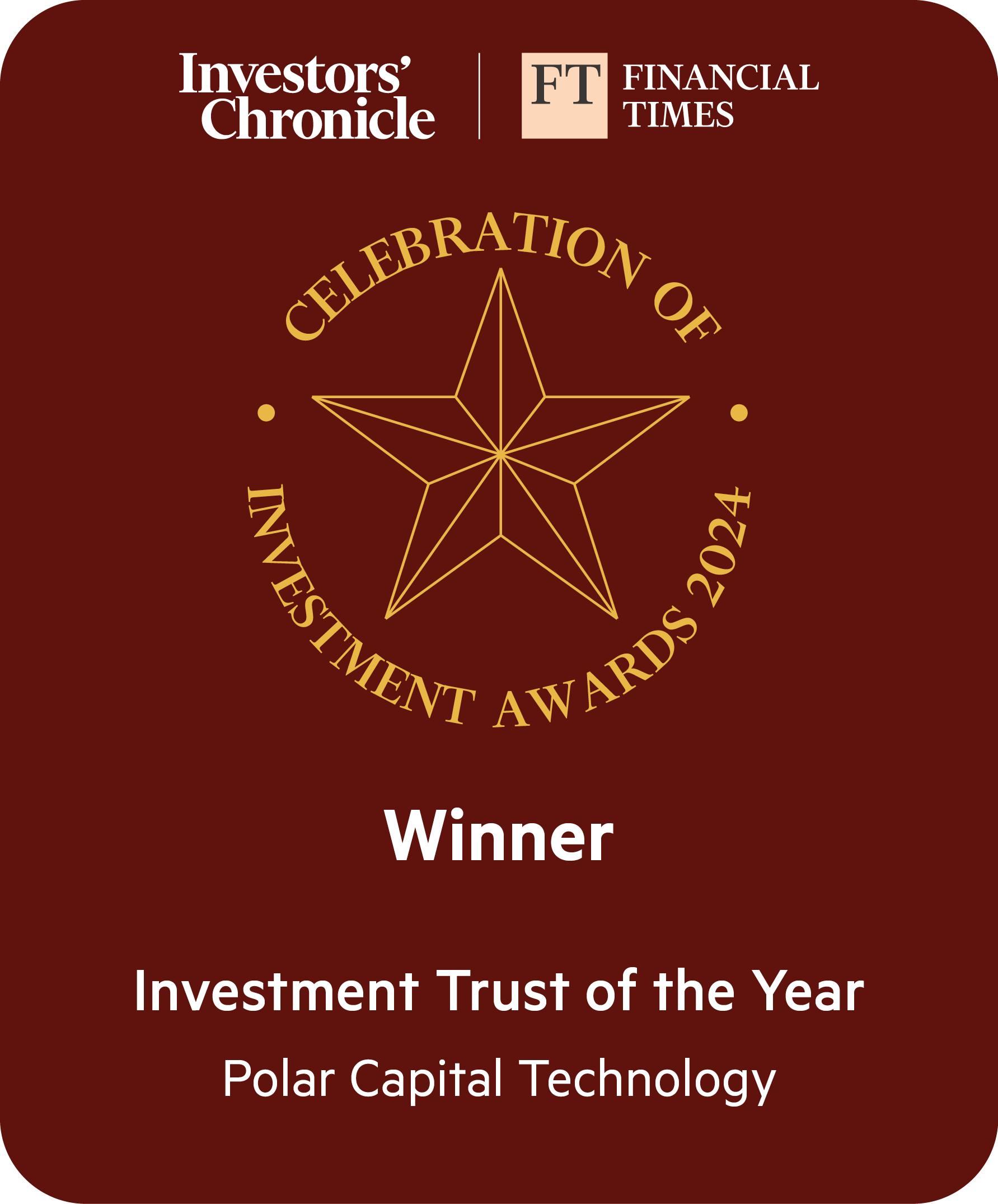
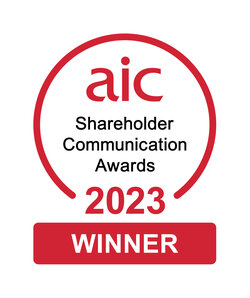
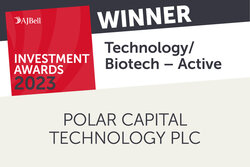

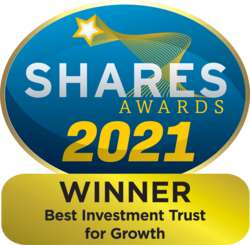

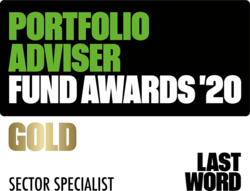
Fund Manager Commentary As at 30 June 2025
Key events
Market review
Equity markets rallied in June, the MSCI All Country World Net Total Return Index gaining +2.6%. The S&P 500 Index hit new highs, rising +3.1%, while the DJ Euro Stoxx 600 Index returned +0.5% (all returns in sterling terms) despite concerns about rising geopolitical tensions in the Middle East, the looming expiry of the tariff pause and concerns over the federal deficit and the trajectory of public debt due to the impending passage of President Trump’s “Big, Beautiful Bill.” The dollar continued to fade, culminating in its worst first-half return since 1973.
Israel attacked Iranian military and nuclear sites; Iran retaliated with missile strikes on Israel. The US entered the conflict, conducting airstrikes on three of Iran's key nuclear facilities. Earlier fears of Iranian reprisals were misplaced as retaliatory strikes on the US Al Udeid Air Base in Qatar were little more than a face-saving exercise with no casualties reported. Equity markets rallied after the US-brokered ceasefire ended the 12-day conflict with Iranian nuclear ambitions said to have been set back by around two years.
Tariffs remain a concern for investors in advance of the end of the Trump administration’s pause now scheduled for 1 August. Since Liberation Day, the US has signed a trade deal with the UK and there has been a notable de-escalation in the trade war between the US and China. However, many countries appear to be struggling to finalise deals. The US administration has taken a pragmatic approach thus far, although it continues to use tariffs to force trade concessions: Canada cancelled its digital services tax on US technology companies just hours before it was due to start, after Trump threatened to end trade talks and set a new tariff rate.
While it is too early to see the full impact of trade and fiscal policy changes, so far data suggests the US economy remains relatively resilient. Private payrolls increased by 139,000 in May, a small slowdown from April’s 147,000, but above forecasts of 130,000, consistent with a slowing yet still robust labour market. Inflation remains relatively benign: the Consumer Price Index increased +0.1% month-on-month (m/m) in May, decelerating from +0.2% in April, below forecasts of +0.2%, which also helped lower US government bond yields.
Another concern for equity markets has been rising public debt, reflected in increasing long-term government bond yields. Having temporarily closed above 5% in May – for the first time since late October 2023 – the 30-year US Treasury bond yield fell to 4.77% in June, benefiting from a 14% plunge in the price of Brent crude oil from mid-month highs, due to the de-escalation of tensions in the Middle East.
The Federal Reserve left the federal funds rate unchanged at 4.25-4.50%, for a fourth consecutive meeting, in line with expectations, as policymakers await the full economic impact of Trump’s policies. Officials also noted that uncertainty about the economic outlook has diminished but remains elevated. The Fed continues to project two rate cuts later this year, though it anticipates only one quarter percentage point in 2026 and 2027.
Technology review
The Trust had a strong month, gaining +10.4% compared to the Dow Jones Global Technology Total Return Index (W1TECN) which returned +7.6%. Technology outperformed broader markets too, albeit hindered by the so-called Magnificent 7’s (Mag 71) gains of only +4.2%.
During the month, large-cap technology stocks narrowly underperformed their small and mid-cap peers; the Russell 1000 Technology Index (large cap) and Russell 2000 Technology Index (small cap) returning +7.4% and +7.6% respectively. The Philadelphia Semiconductor Index (SOX) returned +14.6% while the NASDAQ Internet Index (QNET) and iShares Software (IGV) returned +5% and +3.7% respectively.
AI data points remain very strong, especially around usage (token generation), which drives AI infrastructure spend for the rapidly developing inference2 market. JP Morgan raised capital expenditure (capex) expectations for the top four cloud service providers again to +20% year-on-year (y/y) growth in 2026. We noted last month that in Q1 Microsoft saw 100 million tokens consumed, of which 50 million occurred in March alone. That accelerating consumption trend has clearly continued, with Google’s CEO highlighting a 50-fold increase of tokens per month in the past 12 months to 480 trillion, while OpenAI’s Head of Product talked about 600 trillion tokens generated through its API platform this year. The AI talent war has also heated up with Meta Platform (Meta)’s investment in Scale AI resulting in founder Alexandr Wang joining to run its Superintelligence lab.
In the semiconductor sector, Broadcom posted a ‘beat and raise’ quarter supported by robust growth in AI semiconductors at +46% y/y; revenue from these AI chips is tracking at 60% y/y and management expects that growth rate to sustain into FY26 due to burgeoning inference demand – one of the first indications we have had of sustained AI spend growth into 2H26. Broadcom is set to ramp its next-generation custom ASIC (application-specific integrated circuit3) projects for Google (TPU) and Meta (MTIA) rapidly over the next few quarters.
AI networking company Credo Technology grew quarterly revenues +180% y/y amid continued strong demand for its active electrical (high-speed internet) cables and a growing list of customers with two new hyperscalers ramping. Credo also announced a digital signal processor win with a US hyperscaler. Networking peer Ciena delivered revenues and guidance ahead of expectations but saw some gross margin headwinds from mix and tariff impacts. The company signed its first deal with a hyperscaler to create regional GPU (graphics processing unit4) clusters.
Further AI strength was evident at Micron Technology who, against elevated expectations, beat analysts’ estimates. High-bandwidth memory (HBM) revenues for AI accelerators grew +50% quarter on quarter and the company is now shipping samples of next-generation HBM4 to several customers. This AI memory strength helped the company guide to above expectation gross margins, with data centre revenue now >55% of Micron’s total sales, more than doubling y/y.
Oracle delivered a solid quarter with strong hardware and licence revenue driving the beat, but FY26 and indicative FY27 guidance were ahead of expectations due to AI demand. Oracle expects the total cloud infrastructure growth rate to increase from +50% in FY25 to >70% in FY26. Most pertinently, the company expects bookings to grow more than 100% in FY26, with potential further upside if OpenAI’s Stargate project ramps. Against such strong demand, Oracle also guided up capex to >$25bn versus expectations for >$20bn.
In cybersecurity, CrowdStrike Holdings delivered a strong set of results, with total annual recurring revenue (AAR) growing +22% y/y, and the company citing increased confidence in acceleration in the second half of the year. Operating and cashflow margins were both above street expectations and a headcount reduction should lead to further operating margin expansion.
Outlook
Markets continued to climb the proverbial ’wall of worry’ with another strong month, allowing equities to reach new all-time highs as macro and geopolitical concerns receded. Trade talks made progress ahead of the expiry of the reciprocal tariff extension. Interest rate expectations provided support as Fed officials sounded incrementally dovish amid supportive inflation data: US 10-year Treasury yields fell to 4.22% by month end while credit spreads tightened.
Events in the Middle East were dramatic and challenged the narrative of isolationist US foreign policy though they have not (yet) escalated any further. Trump’s fiscally stimulative “Big Beautiful Bill” is progressing through the reconciliation process and the proposed section 889 ‘revenge tax clause’ – which would have empowered the US Treasury to impose additional taxes on foreign investors and companies if their home country’s tax systems were deemed discriminatory – was thankfully removed.
There are still risks to the market-friendly direction of travel along these, and other, macro and geopolitical lines, although our base case remains that the current environment is best seen as a period of recalibration rather than a full reset. In our view, it is not in policymakers’ interests to provoke a deep global recession and, for now, it is still within their capacity to prevent it. Soft data and company commentary indicate caution and concern, consistent with the expectation that tariffs will have a visible effect in the form of a one-time inflation rebound, slower hiring and tempered investment in many exposed sectors – proving a headwind to growth but likely not prompting a recession. However, bouts of macro and market volatility are still likely to occur as well as others inherent to the development and adoption of new general-purpose technologies.
The technology market continues to be led by AI. News flow has continued to point to rapid AI progress, investment and adoption which should provide a supportive backdrop for the Trust. Those with the best vantage point are deploying their resources increasingly aggressively: the four largest US cloud service providers spent $447bn on capex in 2022-24, which Goldman Sachs expects to reach an astonishing $1.15trn between 2025-27.
AI demand is also strengthening, with hyperscalers and neo-clouds5 reporting capacity constraints even at a time when agentic AI (which can perform tasks on behalf of users rather than merely helping the user perform tasks) is still nascent. Amazon CEO Andy Jassy wrote in a letter this month: “Technologies like Generative AI are rare; they come about once in a lifetime and completely change what’s possible for customers and businesses… we have strong conviction that AI agents will change how we all work and live.” Google founder Sergey Brin was more succinct, saying: “The final race to AGI [artificial general intelligence6] is afoot”. Further commentary indicates an expectation for significant AI-driven operating leverage still to come. Jassy continued: “As we roll out more Generative AI and agents…in the next few years, we expect that this will reduce our total corporate workforce as we get efficiency gains from using AI”.
AI adoption/usage also continues to ramp; 61% of US adults have used AI in the past six months and 19% interact with AI each day, according to Menlo Ventures. At the enterprise level, 9.2% of US firms currently use AI to produce goods or services, up from 7.4% in the previous quarter, according to the Census Bureau. Ramp – a US-based corporate card and bill payment provider – releases an AI Index each month to measure the adoption of AI products across 30,000 businesses on its platform. In January 2024, 17% of businesses had paid subscriptions to AI models, platforms and tools, rising to 26% of businesses by the end of the year. Ramp has observed a significant inflection in AI adoption this year with 42% of businesses paying for AI in May 2025. Within the tech sector, AI-related job openings now account for 24% of all IT job openings.
Against a mixed macroeconomic backdrop, AI strength has presaged a year-to-date divergence between AI winners and losers (as measured by Goldman Sachs’ long AI beneficiaries versus short AI at-risk companies). Market breadth has narrowed while single-stock volatility and dispersion has picked up as the market attempts to sort between the AI ‘haves’ and ‘have-nots’ – a trend we expect to continue.
While we see continued AI fundamental strength as AI adoption/usage and infrastructure demand accelerates, the recent trajectory of AI-led outperformance may moderate in the near term. After a strong run heading into the second-quarter earnings season there is a risk companies strike a conservative tone, especially given macro and geopolitical uncertainties are persisting, but we expect any associated volatility or period of consolidation over coming weeks to be short-lived as the impact of AI becomes increasingly apparent. CEOs are certainly alive to the pressure to adopt AI and transform their businesses, with 74% of respondents to a Harris Poll survey of 500 CEOs worldwide reporting they could be out of a job within two years should they fail to deliver AI business gains. Our own experience of AI use within the team supports this view which we also expect to benefit the Trust’s performance over the longer term.
1Apple, Microsoft, Alphabet, Amazon, NVIDIA, Meta Platforms and Tesla
2The process of drawing an idea or conclusion from evidence and reasoning
3Circuits for specific applications or tasks, rather than general-purpose use)
4An electronic circuit designed to process images and graphics on a computer
5A new category of cloud computing providers that specialise in offering high-performance computing resources, particularly GPUs, for AI and machine learning workloads
6The stage of AI development where machines have human-level intelligence, able to adapt to new situations, demonstrating common sense and reasoning skills
Ben Rogoff
Ben joined Polar Capital in May 2003. He is lead manager of Polar Capital Technology Trust plc and is a Fund Manager of the Polar Capital Global Technology Fund and Polar Capital Artificial Intelligence Fund.
Alastair Unwin
Alastair joined Polar Capital in June 2019 as a Fund Manager. Prior to joining Polar Capital, Alastair co-managed the Arbrook American Equities Fund. Between 2014 and 2018 he launched and then managed the Neptune Global Technology Fund and managed the Neptune US Opportunities Fund. Prior to Neptune, Alastair was a technology analyst at Herald Investment Management.
Historical Fact Sheets